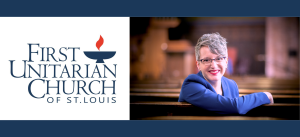
On Saturday, January 21st, we held our annual Mid-Winter Meeting. This was both a fun evening to gather with your church friends and enjoy a potluck meal (we have some great cooks!) as well as a chance to participate in the governance of our congregation.
Our congregation uses a governance system called Policy Governance. In this system the congregation creates a mission statement, vision statement and list of values that we then use to guide the development of a set of congregational goals. In policy governance these goals are called “Ends” and they are really big, ambitious goals that we work together on achieving. Because they are so broad, you should have six, max. Here is a fictional example of what a set of “Ends” might looks like:
The people of Mystery UU Church, Anytown,USA seek to:
Create community through care and connections
Achieve greater spiritual maturity
Foster leadership and generosity
Be a source of love and justice in Anytown, USA
Transform ourselves and the world
The beauty of these broad goals is that all the committees, staff and volunteers can discern together how to best achieve these goals - and are then empowered to put those ideas into action. As situations in the congregation, community, or world change, how they go about achieving them can also change. Each year, the board is responsible for evaluating how well we’re all doing to achieve these goals. The purpose of this structure is to allow flexibility and responsiveness as well as an understanding of how each aspect of the church contributes to the larger whole. It also releases the board from micromanaging (that’s a good thing).
You’ve gotten this far and hopefully this makes sense. However, you still can’t figure out why it’s called policy governance, right? It’s called policy governance because while the committees, staff and volunteers are empowered to put ideas into action, they are bound or, in policy governance language, “limited” by the policies that the board puts in place (such as our safe congregations policy which outline the rules we follow to keep children and adults safe). Here at First Unitarian we have a mission statement and we have policies. We don’t have ends and thus the board can’t evaluate how well we’re doing on achieving them. The values identification process will help us in crafting our vision statement and our ends.
We spent the Midwinter meeting in a process to articulate our values. What I appreciate about the values identified that evening is that they naturally ended up paired with verbs:
Community/ Connection
Open Mindedness/ Welcoming
Compassion/ Service
Knowledge/ Learning
OR… in another format:
The First Unitarian Church of St. Louis values Community, Open Mindedness, Compassion and Knowledge. We promote these values by building connections, welcoming all, serving others and learning together.
Can you see how the values and the mission statement build towards a vision statement? Can you see how those pieces will inform the ends/goals? Here’s the mission statement:
The First Unitarian Church of St. Louis strives to be a welcoming congregation inspiring lives of loving kindness and integrity by building community, nurturing spirituality and advancing justice.
If things sound similar, that’s ok. It would be more problematic if they diverged widely, meaning that something had changed in the congregation or in the participation. What I like about a process like this is that it requires the participation of the congregation. You all are responsible for creating these statements and, ultimately, for crafting a vision and goals for the congregation. This is a ground up process designed to reflect the congregation. The board’s job is not to impose some plan upon the congregation, but to guide the congregation in achieving its highest intentions as articulated in this process.
I hope this has given you a better understanding of our governance and why we’ve been having some of the conversations we’ve been having. If you’re curious about what our governance documents look like, including our bylaws and policies, all those things can be accessed on the church website here.
Your Wonky Minister,
Rev. Kim

